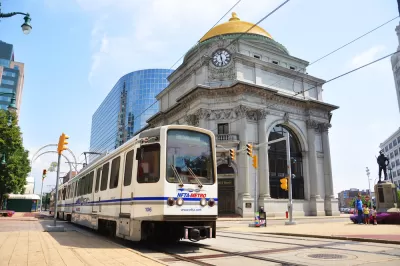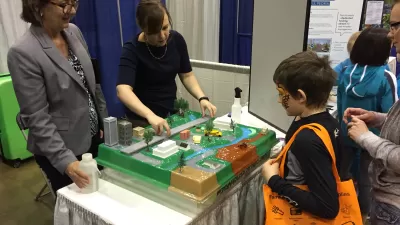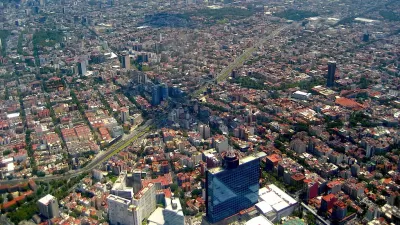Frederick Law Olmsted called Buffalo the best planned city in the United States, but in the second half of the 20th century it transitioned into a prototypical "Rust Belt" city.

Aaron Gordon visited Buffalo in the time before the pandemic to evaluate the city's history as a paragon of 19th century planning, and to explore its potential future at the forefront of what it hopes will be a "mobility revolution."
Aaron Gordon visited Buffalo in the time before the pandemic to evaluate the city's history as a paragon of 19th century planning, and to explore its potential future at the forefront of what it hopes will be a "mobility revolution." The article centers around the work of Stantec and the Congress for New Urbanism (CNU) to help Buffalo achieve its planning goals, in the process overcoming a history of ambitions "big on aspirations and light on specifics."
"Buffalo is not trying to get with the Hyperloop craze or build the next Maglev train," writes Gordon. "It’s trying to find out if these technologies—stuff which operates on American roads right now like autonomous vehicles and electric scooters—can actually provide real solutions to real people while supporting pleasant neighborhoods where people actually want to live."
While the Stantec and CNU team only worked in Buffalo for a few days, Gordon documented an intense planning process for a city that was once the center of an American renaissance in urbanism, and is now challenged by population and economic decline. Because of the city's "good bones," it can appear like urban planning catnip, according to Gordon, for those looking for ways to transition Rust Belt cities into a new era of prosperity. The history of Buffalo, as presented, serves as a microcosm for the history of planning in the United States.
FULL STORY: The 19th Century’s “Best Planned City” Tries Again

Planetizen Federal Action Tracker
A weekly monitor of how Trump’s orders and actions are impacting planners and planning in America.

Congressman Proposes Bill to Rename DC Metro “Trump Train”
The Make Autorail Great Again Act would withhold federal funding to the system until the Washington Metropolitan Area Transit Authority (WMATA), rebrands as the Washington Metropolitan Authority for Greater Access (WMAGA).

DARTSpace Platform Streamlines Dallas TOD Application Process
The Dallas transit agency hopes a shorter permitting timeline will boost transit-oriented development around rail stations.

Renters Now Outnumber Homeowners in Over 200 US Suburbs
High housing costs in city centers and the new-found flexibility offered by remote work are pushing more renters to suburban areas.

The Tiny, Adorable $7,000 Car Turning Japan Onto EVs
The single seat Mibot charges from a regular plug as quickly as an iPad, and is about half the price of an average EV.

Supreme Court Ruling in Pipeline Case Guts Federal Environmental Law
The decision limits the scope of a federal law that mandates extensive environmental impact reviews of energy, infrastructure, and transportation projects.
Urban Design for Planners 1: Software Tools
This six-course series explores essential urban design concepts using open source software and equips planners with the tools they need to participate fully in the urban design process.
Planning for Universal Design
Learn the tools for implementing Universal Design in planning regulations.
Municipality of Princeton
Roanoke Valley-Alleghany Regional Commission
City of Mt Shasta
City of Camden Redevelopment Agency
City of Astoria
Transportation Research & Education Center (TREC) at Portland State University
US High Speed Rail Association
City of Camden Redevelopment Agency
Municipality of Princeton (NJ)





























